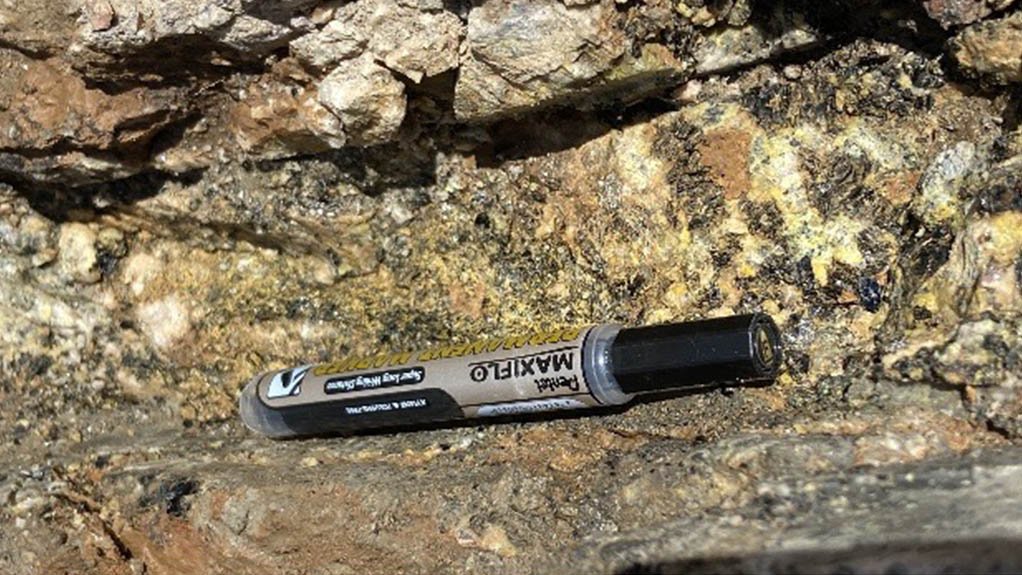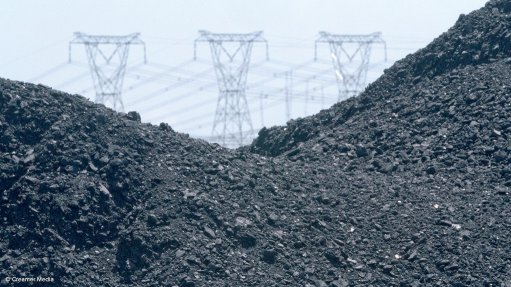Madison encouraged by high-grade uranium assays at its Khan project
The latest assay results from uranium exploration and development company Madison Metals’ recent surface trench sampling programme at its Khan project, in Namibia, have returned an average grade of 2.78% uranium oxide (U3O8) over 4 m at Trench 6.
The first ten assay results from the project were released on February 7, showing 8.47% U3O8 over 1 m in the same trench.
Madison said on March 4 that the assays confirm the surface continuity of mineralised alaskites at Anomaly 5, with uranium grades above 0.1% U3O8 identified across six of the seven sampled trenches.
The results span more than 600 m from Trench 1 northeast to Trench 6, with average grades over the six trenches of 0.47% U3O8. The two longest anomalous sections are from trenches 4 and 5, with 9 m showing more than 0.25% U3O8 and 0.39% U3O8, respectively.
Throughout the prospecting and trench sampling, numerous showings of beta-uranophane, otherwise known simply as yellow staining, were found. Madison explained that beta-uranophane is common in uranium deposits located close to the Welwitschia lineament and is evidence of alteration that has mobilised and deposited secondary uranium.
The uranium mineralisation at the Khan project is hosted in alaskites, similar to the Rössing deposit 6 km to the northeast, which has been in operation since 1976.
Alteration was instrumental in upgrading the nearby Rössing deposit and Madison believes similar processes have occurred at the Khan project.
About 40% of the ore at the Rössing mine is made up of this secondary mineralisation; however, Madison pointed out that the Rössing mine has an average grade of 0.033% U3O8 and has produced a total of 145 567 t of U3O8 through to the end of 2022.
“We are extremely encouraged by this discovery and the high-grade uranium assays this area is generating. To date, we have traced extremely high-grade uranium mineralised alaskites at surface for over 800 m and believe that a maiden drilling programme will identify similar type mineralisation at depth.
“Madison is directing its attention towards transforming that mineralised zone from possibility to reality,” Madison CEO Duane Parnham said.
The company’s structural interpretation of the geology suggests proximity to a dilation zone in which mineralised alaskites were preferentially emplaced in an en-echelon pattern as shown in the 300-m-wide cross-section. Should these alaskites meet at depth, Madison believes there could potentially be significant mineralisation below what Madison knows to be anomalously high-grade U3O8 results at surface.
Moreover, the elevation across the cross section in question drops by about 30 m southwest, while the whole extent of the 800 m strike of the potentially mineralised zone is about 50 m above ground level, which the company believes would make it easier to access.
Article Enquiry
Email Article
Save Article
Feedback
To advertise email advertising@creamermedia.co.za or click here
Announcements
What's On
Subscribe to improve your user experience...
Option 1 (equivalent of R125 a month):
Receive a weekly copy of Creamer Media's Engineering News & Mining Weekly magazine
(print copy for those in South Africa and e-magazine for those outside of South Africa)
Receive daily email newsletters
Access to full search results
Access archive of magazine back copies
Access to Projects in Progress
Access to ONE Research Report of your choice in PDF format
Option 2 (equivalent of R375 a month):
All benefits from Option 1
PLUS
Access to Creamer Media's Research Channel Africa for ALL Research Reports, in PDF format, on various industrial and mining sectors
including Electricity; Water; Energy Transition; Hydrogen; Roads, Rail and Ports; Coal; Gold; Platinum; Battery Metals; etc.
Already a subscriber?
Forgotten your password?
Receive weekly copy of Creamer Media's Engineering News & Mining Weekly magazine (print copy for those in South Africa and e-magazine for those outside of South Africa)
➕
Recieve daily email newsletters
➕
Access to full search results
➕
Access archive of magazine back copies
➕
Access to Projects in Progress
➕
Access to ONE Research Report of your choice in PDF format
RESEARCH CHANNEL AFRICA
R4500 (equivalent of R375 a month)
SUBSCRIBEAll benefits from Option 1
➕
Access to Creamer Media's Research Channel Africa for ALL Research Reports on various industrial and mining sectors, in PDF format, including on:
Electricity
➕
Water
➕
Energy Transition
➕
Hydrogen
➕
Roads, Rail and Ports
➕
Coal
➕
Gold
➕
Platinum
➕
Battery Metals
➕
etc.
Receive all benefits from Option 1 or Option 2 delivered to numerous people at your company
➕
Multiple User names and Passwords for simultaneous log-ins
➕
Intranet integration access to all in your organisation





















